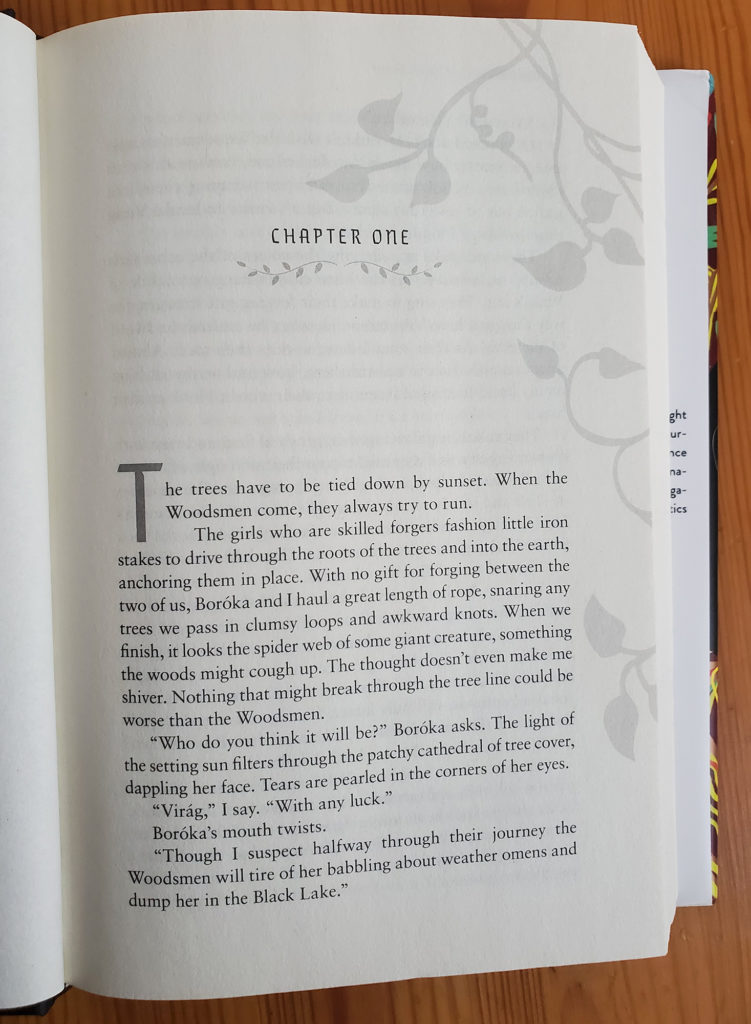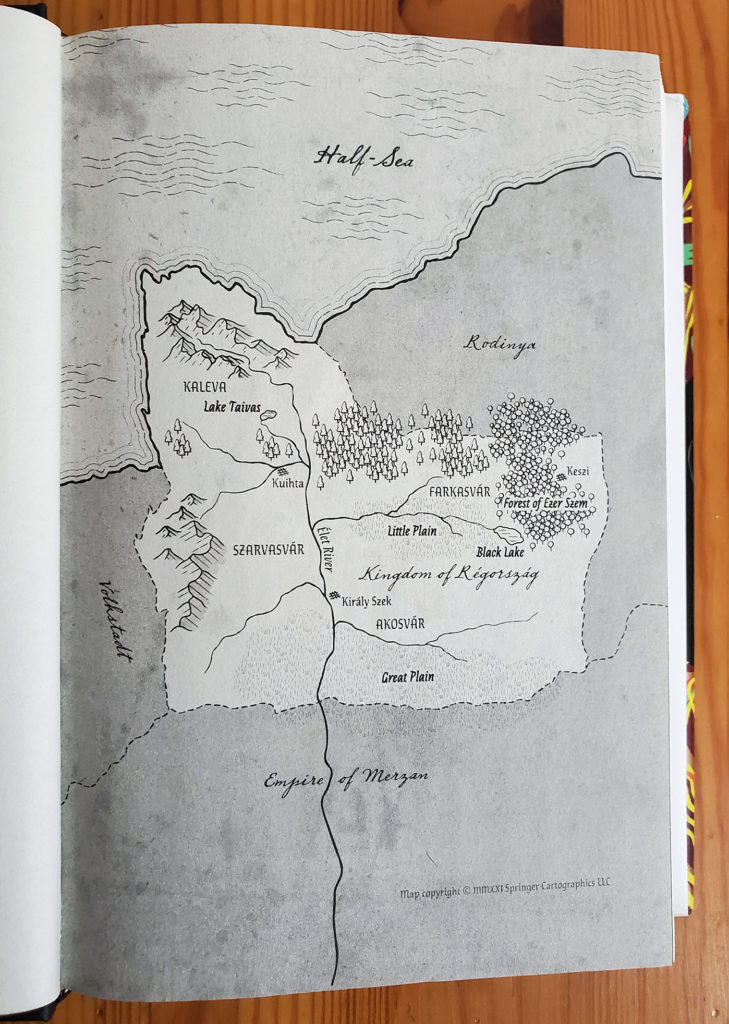This week I have a review of Ava Reid’s The Wolf and the Woodsman, a fantasy novel out from Harper Voyager (who was kind enough to provide me with a review copy). This post contains affiliate links to Bookshop.org, an online bookstore that financially supports independent bookstores, and if you buy from my links, I will receive a small commission at no extra cost to you.

The Book Witch’s One Sentence Review
The Wolf and The Woodsman by Ava Reid is a lovely debut with an Eastern European flavor, a rich world, vibrant characters, and a multi-faceted plot that explores religion, identity, friendship, family loyalty and disloyalty, tolerance, and bigotry.
Introduction
The plot of The Wolf and The Woodsman is fairly simple: A young woman is forced to leave home against her will, and finds herself making what amounts to a deal with the devil to save not just herself, but her people.
Describing Reid’s debut in this way does it no justice, however. This book has layers of complexity that reveal themselves slowly as the two main characters—Évike and Gáspár—march northward through the snow-covered country in search of a mystical creature that has the power to save what they each hold dear—or so they think.
Drawing heavily on Hungarian and Jewish folklore, The Wolf and The Woodsman has a distinct Eastern European flavor with a universal message. Although it can be read as an allegory for the spread of Christianity throughout Europe, to the detriment of pagans, Jews, and Muslims, it’s much more than that.
The novel tackles issues of religion, identity, friendship, family loyalty and disloyalty, tolerance, and bigotry. It forces Évike to determine how far she’ll go to save her village and the people in it, who often treated her poorly and were willing to essentially throw her away to save someone else. It also forces Gáspár to question his own faith, family, loyalty, the nature of love, and even his humanity, in fundamental ways.
The setting felt both incredibly grounded and delightfully unfamiliar. One of my favorite details was the fearful trees the villagers had to tie down so they didn’t run away when the Woodsman came.
But before all of that, the beginning.

When the Woodsman Met the Wolf
Évike lives in an isolated forest town inhabited by pagans. Unlike her fellow female villagers who wield various types of magic, Évike’s “only” skill is hunting. Because she is a woman who lacks magic, she is treated poorly by the other young women and girls in her village.
The village is part of a kingdom that has become increasingly intolerant to the pagans living on its outskirts who don’t follow the Patrifath (a loose equivalent to Christianity). In exchange for leaving the village to its own devices most of the time, every now and then the King sends his Woodsmen out to collect a magic-wielding “Wolf Girl.”
No one in the village knows what happens to the Wolf Girls who are taken, but they are never seen again. The novel opens on a tense day: The Woodsmen are on their way to collect a seer, which is a particularly rare gift among the pagan magic users. The village elder forces Évike to take the place of Katarina, the true seer.
After the Woodsmen take Évike, clothed in Katarina’s wolf cloak, a series of unfortunate (for the Woodsman) events leads to the revelation that the head Woodsman, Gáspár, is actually the king’s son, and that he desperately wants to prevent his zealously religious younger half-brother from ascending to the throne. This event, which would be bad for Gáspár because of his late mother’s status as an outsider, would also spell doom for the pagans and other minority groups living in the kingdom.
So, Gáspár and Évike forge an uneasy alliance and agree to search for a mythical creature that would give Gáspár the power to gain favor with his father and ascend the throne. They start off hating each other, but come to have grudging respect for each other as their journey goes on.
Although the novel is told from Évike’s perspective, we spend a lot of time with both characters. There’s lots of romantic and sexual tension between Évike and Gáspár, but the novel never turns him into Évike’s savior like many YA fantasy novels tend to do. She saves his life as much as he saves her (his inability to use a bow and arrow with any accuracy is also something Évike, an expert marksman, uses to her advantage).
I’ll stop my summary there to avoid any spoilers, but I will say this: At one point, there is a pet bear. He’s pretty cool.

Final Thoughts
With the long history of fantasy novels based on wildly inaccurate assumptions about medieval England, it’s always refreshing to see fantasy settings based on other areas and cultures. Books like this have become more plentiful in recent years, but it’s going to take quite awhile for me to get sick of them (I read a lot of medieval-England-fantasy in high school). There also seems to be a recent surge in speculative fiction inspired in part by Jewish history and folklore, written by Jewish authors, and I can only hope we see this trend continue as well.
The Wolf and The Woodsman does read like a debut novel at times—certain sections meander a bit, or we get overly lost in Évike’s thoughts, and the overall structure could have been streamlined a bit more. But these are all quibbles, and didn’t take away from my enjoyment of the story.
At the end of the day, Reid’s prose is as sharp as one of Évike’s arrows, and she knows how to hit a bullseye.
If you’d like to pick up a copy of The Wolf and The Woodsman, please consider buying from your local indie bookstore, or online from Bookshop.org, which supports indies! While you’re at it, you can preorder Ava Reid’s new book, Juniper and Thorn, out May 22!
Have you read The Wolf and The Woodsman? Want to add it to your TBR? I’d love to hear what you think in the comments or on Instagram or Twitter @bookwitchblog!
